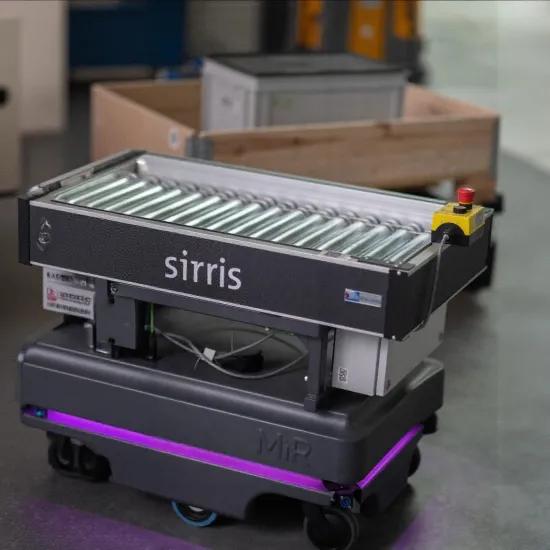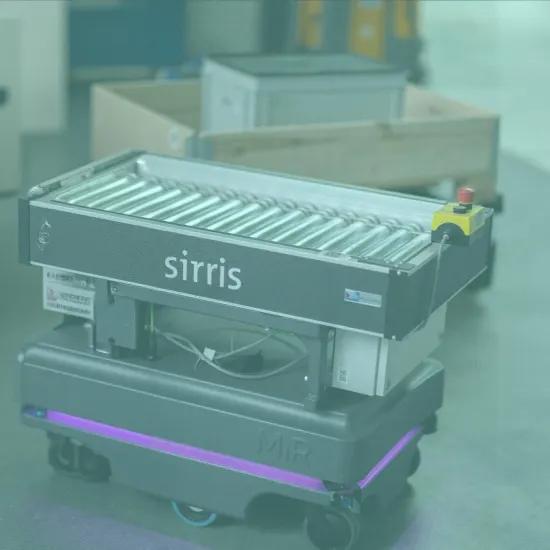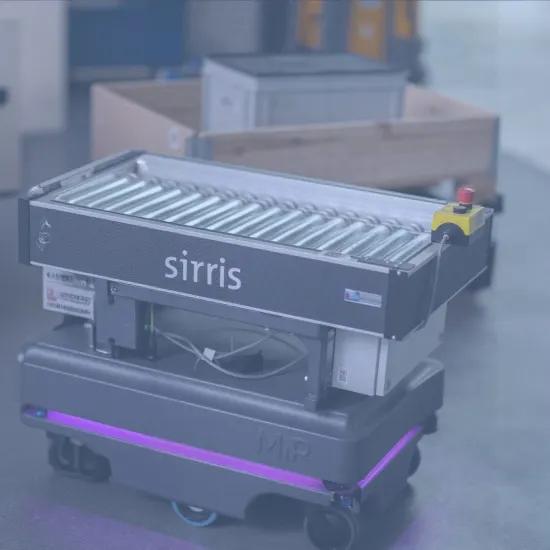To meet changing customer demands (personalised products, smaller series, short lead times, low costs), manufacturing companies must become more flexible and produce smartly. Optimising the internal production logistics is just as important as optimising the production processes. We take a look at the situation as it is today and what the future may bring.
Internal production logistics typically include the actions needed to supply the various machines or work cells on the production floor and take away the finished products. Present-day production logistics are far from optimal: operators walk around looking for materials, many - often manual - transport movements are required, material buffers are located on the shop floor to prevent machines from running empty (a lot of work-in-progress) and tasks are mainly planned manually, which often results in material shortages and machine downtime...
Autonomous mobile robots as a solution
Recent technological developments in autonomous mobile robots (AMRs) promise to automate certain production logistics operations, i.e. transports. An AMR is a mobile robot that can understand/interpret its environment to move autonomously, without the intervention of an operator. AMRs typically do this with the help of sensors that can determine their actual position - in contrast to AGVs, which need external guidance to follow pre-defined routes. Despite this, the terms ‘AGV’ and ‘AMR’ are often used interchangeably.
Left: AGV versus AMR; centre: examples of AMRs; right: digital planning and control
AMRs can be equipped with top modules such as lift systems or conveyor belts to automate transfer onto, for example, a machine or production line, in addition to transporting the carriers (with limited operator intervention). Digital technologies - brought together under the heading "Industry 4.0" - in turn make it possible to plan and control these autonomous mobile robots more efficiently via RP, MES, etc.
You can read more about the potential of AGVs and AMRs in the following blog post.
The market for AGVs/AMRs continues to grow. This is also clearly happening in manufacturing industry, where some (leading) companies have already integrated AMRs into their production. Although there are still many (practical) challenges, it can be safely said that the number of implementations is increasing step by step. As an example, Altachem is investigating the feasibility of AMRs for supplying their machines.
Looking to the future: a fleet of AMRs?
While AMRs are already driving around in warehouses in several sectors - Amazon, for example, has more than 200,000 mobile robots in use, an increasing number on the factory floor can also be expected.
(Source: Amazon)
A fleet of AMRs driving around on the factory floor will of course pose a number of challenges. Warehouses are typically laid out - or at least better laid out - for frequent material transports (logical layout, wide aisles, increased accessibility, etc.), which favours automation with AMRs. Production environments are often the opposite, with material buffers, many crossing flows, illogical layout, etc. If AMRs are to be allowed to circulate there, the layout will have to be adapted and there will be a need for intelligent AMRs that can correctly assess the situation they find themselves in. Artificial intelligence can play a role here.
Artificial intelligence for super-smart AMRs
Autonomous mobile robots use sensors and software for control, to determine where and how the robot should move, and perception to let it understand and respond to its environment - constantly mapping out and assessing its surroundings. The data required for these processes comes from integrated laser scanners, 3D cameras, accelerometers, gyroscopes, wheel encoders, ... Thanks to advanced control algorithms (often integrated into brand-specific software), AMRs can dynamically navigate the most efficient routes, avoid obstacles or people in their path and even automatically recharge as needed.
Without artificial intelligence, however, the robots react to all obstacles in the same way - they slow down and try to navigate around the person or object. If this is not possible, the platform will stop to wait until it can determine a path. While this is already a huge improvement over standard AGV technology (predefined paths), the integration of AI allows AMRs to anticipate obstacles on their route so they can plan a better one. And if you have a fleet of AMRs, they can learn from each other and constantly improve. Data from the various sensors is used to expand the AMR's understanding of its environment so that it can adjust its behaviour accordingly before entering an area (e.g., avoiding high-traffic areas during specific times). As an example of this, mobile industrial robots (MiR) integrate AI into their software.
Get the basics right
Although it is interesting to take a look into the future, it is also important to focus on the present. After all, many manufacturers are already wanting to see whether an AMR can offer added value for their specific situation. This is why Sirris is organising an (online) event about this topic on 2 March: ‘Production Logistics Masterclass 4.0 - Meet the AMRs’!
Automation of logistics operations helps operators perform their tasks. Sirris has a specific testing ground for this: within Testing ground Operator Support we want to demonstrate technologies and applications and to encourage and inspire companies by making generic demonstrators available to them. This is thanks to support provided by VLAIO within the Industrie 4.0 project.







